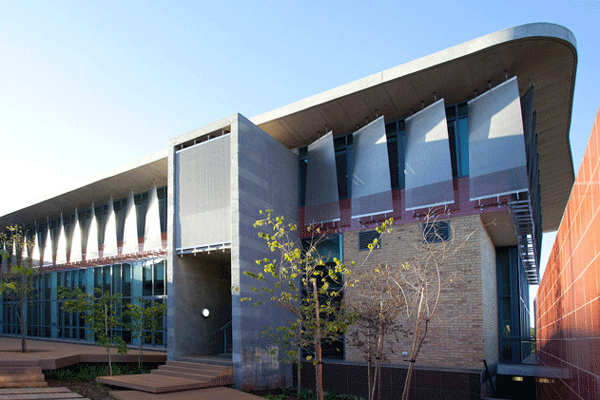
Environmental conservation is a talking point worldwide and the South African National Roads Agency Limited (SANRAL) is helping the cause. It took steps to protect and enhance our natural resources when they built their head office.
SANRAL was the first parastatal to receive a Green Star SA rating for its head office on Schoeman Street in Pretoria in 2012 by the Green Buildings Council of South Africa (GBCSA).
Founded in 2007, the GBCSA is an independent, non-profit organisation that was formed to lead the transformation of the South African property industry to an environmentally sustainabile sector.
As one of 80 World Green Building Council members, GBCSA ensures all buildings are designed, built and operated in an environmentally sustainable way, allowing South Africans to live and work in healthy, efficient and productive environments.
SANRAL’s building received a four star rating while scoring particularly well in Green Star’s energy and water categories, significantly reducing the building’s use of these scarce resources. Buildings can receive either a four, five or six star rating.
Brian Wilkinson, CEO of GBCSA, said: “Green Star SA rates buildings according to nine categories, eight of which are environmental. These categories include indoor environmental quality, energy, water, materials and emissions, and innovation.
“The Green Star SA rating tool sets out specific targets (or credits) in each environmental category and buildings are awarded points for each target they hit. The total points determine the buildings Green Star SA rating.”
The building
The features at SANRAL’s head office include a green roof, planted with water-wise succulents, solar-generated hot water for a fresh-air heating system and a two-layered façade that increases natural light and views, while decreasing heat build-up.
The air-conditioning system consists of two air-cooled reverse-cycle chillers with a combined capacity of approximately 75% of the peak building design cooling load. Ice is produced and stored during the off-peak night cycle, which can supplement the cooling requirement during the day.
In the winter mode, the chillers run as heat pump units to meet heating requirements, while the ice produced during the night is melted to meet cooling requirements.
Fresh air is pre-cooled or pre-heated by recovering energy from the exhaust air, by means of heat recovery wheels. In winter, stored solar-heated water supplements the pre-heating of outside air by means of coils in the fresh-air system.
The vertical green-walling system as well as the green roof has a substantial and significant environmental benefit, combating and reducing what is known as the “urban heat island effect”.
Wilkinson said: “Green building offers one of the simplest, most immediate and cost-effective ways to reduce human-generated carbon emissions.
“It is essentially the ‘low hanging fruit’ of emission reduction and it is through the efforts made with buildings such as the SANRAL office that South Africa will begin to move towards our commitment of reduced carbon emissions.”

